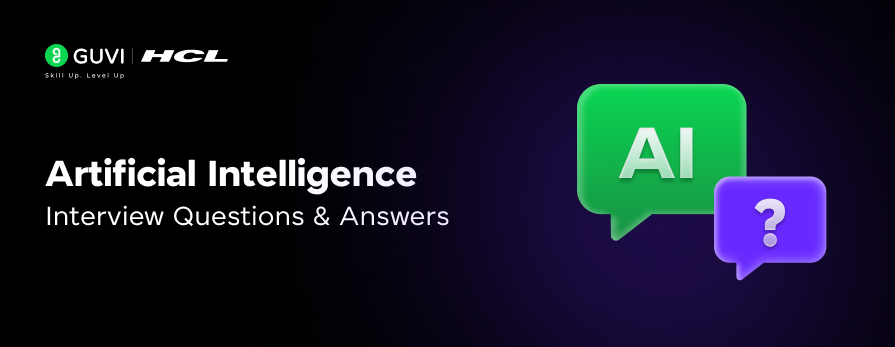
Top 60+ AI Interview Questions and Answers
Mar 21, 2025 15 Min Read 10510 Views
(Last Updated)
In today’s fast-evolving tech landscape, artificial intelligence (AI) is no longer a futuristic concept—it’s a cornerstone of innovation across industries. Whether you’re an aspiring AI professional or a seasoned expert aiming to upskill, preparing for AI-related interviews can be daunting due to the vastness of the field.
From foundational AI principles to cutting-edge advancements in generative AI, coding challenges, and algorithmic complexities, cracking these interviews demands technical depth and practical know-how.
So to make this interview preparation simpler for you, I have drafted this article that compiles 60+ must-know AI interview questions and answers across diverse topics backed by thorough research as an AI/ML and data science enthusiast. Let’s begin!
Table of contents
- Top AI Interview Questions and Answers (Section-Wise)
- General Concepts
- Machine Learning
- Deep Learning
- Natural Language Processing (26–35)
- Advanced Topics
- Scenario-Based Questions
- Generative AI
- Coding and Algorithmic Challenges
- Concluding Thoughts…
Top AI Interview Questions and Answers (Section-Wise)
I have divided all these important AI interview questions and answers into various sections for your ease of learning, I recommend covering the general concepts as a must and then going through all the sections one by one so that you can gain a well-rounded knowledge of how these interviews are undertaken and how much and what you should prepare.
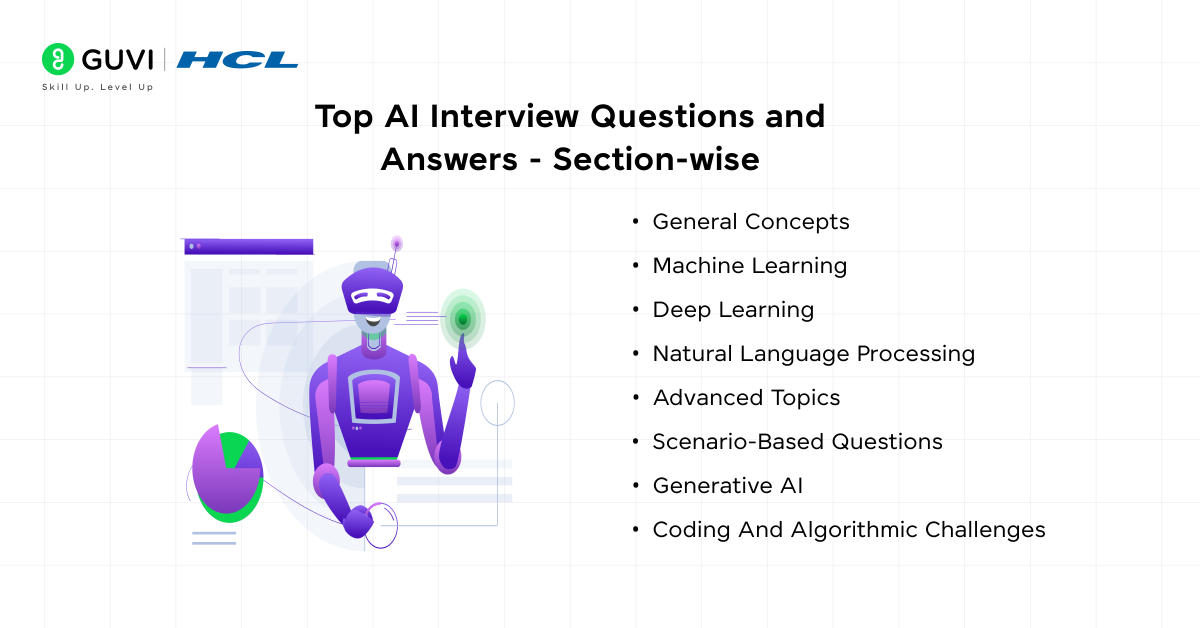
1. General Concepts
1) What is Artificial Intelligence, and how is it different from Machine Learning?
Answer:
Artificial Intelligence (AI): A field of computer science aimed at creating systems that mimic human intelligence, encompassing reasoning, perception, decision-making, and natural language understanding.
Machine Learning (ML): A subset of AI focused on enabling machines to learn patterns from data and improve over time without explicit programming.
Difference: AI is the broader goal of building intelligent systems, while ML is a method to achieve this by training models using data.
2) What are the key components of AI?
Answer:
- Knowledge Representation: Structures for encoding real-world knowledge.
- Reasoning and Problem-Solving: Algorithms for inference and decision-making.
- Learning: Techniques like supervised, unsupervised, and reinforcement learning.
- Perception: Processing sensory inputs such as images and audio.
- Natural Language Processing (NLP): Understanding and generating human language.
- Planning: Generating sequences of actions to achieve goals.
- Robotics: Physical interaction with the environment.
3) Define AI agent and its components.
Answer:
AI Agent: An autonomous entity that perceives its environment through sensors, processes the data, and acts on the environment through actuators to achieve specific goals.
Components:
- Perception: Sensors to gather data (e.g., cameras, microphones).
- Decision-Making: Logical or probabilistic reasoning.
- Action: Actuators to interact with the environment (e.g., motors, displays).
- Learning Component: Improves performance over time.
4) What is the difference between Strong AI and Weak AI?
Answer:
Strong AI: Hypothetical systems with generalized intelligence, capable of performing any intellectual task a human can do, including self-awareness and reasoning.
Weak AI: Systems designed for specific tasks, such as voice assistants, which lack general intelligence or self-awareness.
5) Explain the Turing Test and its limitations.
Answer:
Turing Test: A test proposed by Alan Turing to evaluate a machine’s ability to exhibit intelligent behavior indistinguishable from a human during a conversation.
Limitations:
- Focuses solely on language capabilities, not general intelligence.
- Can be deceived by superficial tricks or pre-programmed responses.
- Ignores emotional and ethical dimensions of intelligence.
6) What is the difference between a heuristic and an algorithm in AI?
Answer:
- Heuristic: A rule-of-thumb or approximation technique used for problem-solving when finding an exact solution is impractical. Examples include greedy methods or A* search.
- Algorithm: A step-by-step procedure with a well-defined structure that guarantees a correct solution if one exists. Example: Merge Sort.
- Difference: Heuristics prioritize speed and feasibility, while algorithms prioritize accuracy and completeness.
7) What are Markov Decision Processes (MDPs)?
Answer:
Definition: A mathematical framework for modeling decision-making in environments with probabilistic transitions and rewards.
Components:
- States (S): Possible configurations of the environment.
- Actions (A): Choices available to the agent.
- Transition Probabilities (P): Probability of moving from one state to another given an action.
- Reward Function (R): Feedback received after transitioning between states.
- Policy (π): Strategy defining actions to maximize cumulative rewards.
8) What is the difference between supervised, unsupervised, and reinforcement learning?
Answer:
- Supervised Learning: Models are trained on labeled data to predict outputs. Example: Classification, regression.
- Unsupervised Learning: Models find patterns or structure in unlabeled data. Example: Clustering, dimensionality reduction.
- Reinforcement Learning: An agent learns optimal actions through trial and error by receiving rewards or penalties. Example: Game playing, robotic control.
9) What are ethical concerns in AI development?
Answer:
- Bias: Models reflecting societal prejudices in training data.
- Privacy: Unauthorized use of personal data for AI training.
- Transparency: Black-box nature of some AI models complicates accountability.
- Job Displacement: Automation replacing human roles.
- Security Risks: Misuse of AI in cyberattacks or surveillance.
10) What are the common evaluation metrics for AI models?
Answer:
- Classification Models: Accuracy, Precision, Recall, F1-score, ROC-AUC.
- Regression Models: Mean Squared Error (MSE), Mean Absolute Error (MAE), R².
- Clustering Models: Silhouette Score, Dunn Index, Davies-Bouldin Index.
- NLP Models: BLEU (translation quality), Perplexity (language modeling).
- Reinforcement Learning: Cumulative Reward, Policy Stability.
If you’re preparing for AI interviews or want to build a solid foundation in Artificial Intelligence, then GUVI’s Artificial Intelligence & Machine Learning Course is designed for you. This comprehensive program offers hands-on projects, mentorship from industry experts, and certifications recognized by leading companies.
You’ll master essential AI tools like Python, TensorFlow, and OpenCV while tackling real-world challenges, ensuring you’re interview-ready and job-market competitive.
2. Machine Learning
11) Explain the bias-variance tradeoff.
Answer:
The bias-variance tradeoff refers to the balance between two types of errors in a machine learning model: bias and variance.
- Bias refers to the error introduced by simplifying assumptions in the model (e.g., underfitting).
- Variance refers to the error caused by the model’s sensitivity to small fluctuations in the training data (e.g., overfitting).
The goal is to find the optimal model complexity that minimizes both bias and variance. As model complexity increases, bias decreases, but variance increases, and vice versa. Striking the right balance is key to achieving good generalization.
12) What are ensemble methods, and why are they used?
Answer:
Ensemble methods combine multiple base models to improve the overall performance and robustness. Key types include:
- Bagging (e.g., Random Forest): Trains multiple models independently on different data subsets and averages their predictions.
- Boosting (e.g., AdaBoost, Gradient Boosting): Sequentially trains models to correct errors made by previous models.
- Stacking: Combines the predictions of multiple models using a meta-model. Ensemble methods reduce overfitting, improve generalization, and enhance predictive accuracy by leveraging diverse models.
13) What is cross-validation, and why is it important?
Answer:
Cross-validation is a technique for assessing the performance of a machine learning model by partitioning the data into multiple subsets (folds) and training/testing the model on different combinations. The most common method is k-fold cross-validation, where the data is split into k parts and the model is trained k times, each time using a different fold for validation. This process reduces model variance, provides a more accurate estimate of model performance, and helps detect overfitting.
14) What are support vector machines (SVMs)?
Answer:
Support Vector Machines (SVMs) are supervised learning models used for classification and regression tasks. SVMs aim to find the hyperplane that best separates data into different classes with the maximum margin. This margin is the distance between the closest data points (support vectors) and the hyperplane. SVMs are particularly powerful in high-dimensional spaces and can efficiently handle non-linear decision boundaries by using kernel functions (e.g., Radial Basis Function).
15) What is feature engineering, and why is it crucial?
Answer:
Feature engineering is the process of transforming raw data into meaningful input features for machine learning models. It involves techniques like scaling, encoding categorical variables, handling missing data, and creating new features. Proper feature engineering can significantly enhance model performance by providing more relevant information and reducing noise, making it a key step in building high-performing models.
16) What is gradient descent?
Answer:
Gradient descent is an optimization algorithm used to minimize the cost function in machine learning models, especially in neural networks. It iteratively adjusts the model’s parameters (weights) in the opposite direction of the gradient of the cost function, with the goal of finding the global (or local) minimum. Variants include:
- Batch gradient descent: Uses the entire dataset to compute gradients.
- Stochastic gradient descent (SGD): Uses one data point at a time.
- Mini-batch gradient descent: Uses a subset of the data for each iteration.
17) What are hyperparameters, and how do you tune them?
Answer:
Hyperparameters are parameters set before the training process that control the learning algorithm (e.g., learning rate, regularization strength). They are different from model parameters, which are learned from data. Hyperparameter tuning involves selecting the optimal values for these parameters using methods like:
- Grid search: Exhaustive search over a specified parameter grid.
- Random search: Randomly sampling combinations.
- Bayesian optimization: Probabilistic model-based optimization.
18) Explain dimensionality reduction and its techniques.
Answer:
Dimensionality reduction refers to techniques used to reduce the number of features in a dataset while retaining essential information. It is critical for handling high-dimensional data, reducing overfitting, and improving model performance. Techniques include:
- Principal Component Analysis (PCA): A linear technique that transforms features into a smaller set of uncorrelated components.
- t-Distributed Stochastic Neighbor Embedding (t-SNE): Non-linear technique used mainly for visualizing high-dimensional data.
- Autoencoders: Neural network-based technique that learns a compact representation of input data.
19) What is the curse of dimensionality?
Answer:
The curse of dimensionality refers to the challenges that arise when dealing with high-dimensional data. As the number of features (dimensions) increases, the volume of the space increases exponentially, causing data points to become sparse. This leads to issues such as:
- Increased computational complexity.
- Difficulty in finding meaningful patterns.
- Decreased model performance due to overfitting.
20) What is Regularization, and what are its types?
Answer:
Regularization techniques are used to prevent overfitting by adding a penalty term to the model’s cost function, discouraging overly complex models. Common types include:
- L1 regularization (Lasso): Adds the absolute value of coefficients as a penalty, leading to sparsity (some coefficients become zero).
- L2 regularization (Ridge): Adds the squared value of coefficients as a penalty, which discourages large weights but doesn’t eliminate them.
- Elastic Net: A combination of L1 and L2 regularization.
3. Deep Learning
In this section, we’ll be covering a few questions related to deep learning to help you prepare for the kinds of questions asked.
21) What is a neural network, and how does it work?
Answer:
A neural network is a computational model inspired by the way biological neural networks in the human brain function. It consists of layers of interconnected nodes, also called neurons. The network processes input data through these layers to output predictions or classifications.
- Structure: Neural networks consist of an input layer, one or more hidden layers, and an output layer.
- Learning Process: Neurons in each layer are connected by weights, which adjust during the training process using optimization techniques like gradient descent.
- Activation Function: Each neuron applies an activation function (such as ReLU or sigmoid) to the weighted sum of inputs to determine its output.
Neural networks learn patterns and relationships in the data by minimizing a loss function through backpropagation.
22) What are convolutional neural networks (CNNs)?
Answer:
Convolutional Neural Networks (CNNs) are a specialized class of neural networks primarily used for image processing, pattern recognition, and video analysis. They are designed to process data with grid-like topology, such as images.
- Key Components:
- Convolutional Layers: Apply filters (kernels) to input data to capture local patterns (e.g., edges in an image).
- Pooling Layers: Reduce spatial dimensions (downsampling) to retain important features and reduce computational complexity.
- Fully Connected Layers: After feature extraction, CNNs use these layers to make final predictions.
CNNs are highly effective in tasks such as image classification, object detection, and segmentation due to their ability to recognize hierarchical patterns.
23) What is the role of activation functions in neural networks?
Answer:
Activation functions are mathematical functions used to introduce non-linearity into the neural network, allowing it to learn complex patterns and representations in the data.
- Common Activation Functions:
- ReLU (Rectified Linear Unit): Offers simplicity and efficiency by outputting zero for negative inputs and the input itself for positive inputs, enabling fast training.
- Sigmoid: Maps inputs to a range between 0 and 1, often used for binary classification.
- Tanh: Maps inputs to a range between -1 and 1, making it useful for problems that require symmetric outputs.
- Softmax: Used in multi-class classification, transforming raw outputs into probabilities that sum to 1.
Without activation functions, neural networks would essentially be linear models, limiting their capability to learn complex patterns.
24) Explain backpropagation.
Answer:
Backpropagation is the process used to train neural networks by adjusting the weights of the network to minimize the error between predicted and actual outputs.
- Process:
- Forward Pass: Input data is passed through the network to generate predictions.
- Loss Calculation: The difference between predicted output and actual output is computed using a loss function (e.g., Mean Squared Error).
- Backward Pass: The error is propagated backward through the network, starting from the output layer, using the chain rule of calculus to compute gradients.
- Weight Update: Weights are adjusted using an optimization algorithm like gradient descent to minimize the loss.
Backpropagation allows networks to learn by gradually reducing errors, enabling the optimization of weights to improve model accuracy.
25) What is a recurrent neural network (RNN)?
Answer:
A Recurrent Neural Network (RNN) is a class of neural networks designed for sequential data processing, where the output of a neuron at a given time step is influenced by previous time steps.
- Key Characteristics:
- Memory: RNNs maintain an internal state (memory) that allows them to store information about previous inputs in the sequence.
- Hidden State: The output of the network at each time step depends on both the current input and the hidden state (which is updated at each step).
- Applications: RNNs are widely used for tasks such as time series prediction, natural language processing, and speech recognition.
However, traditional RNNs suffer from issues like vanishing gradients, which can make them hard to train on long sequences. Variants like LSTMs (Long Short-Term Memory) and GRUs (Gated Recurrent Units) address these issues by incorporating mechanisms to retain long-term dependencies.
4. Natural Language Processing (26–35)
Now, let’s learn what kind of questions are asked from Natural Language Processing in AI interviews.
36) What are the main challenges in Natural Language Processing (NLP)?
Answer:
- Ambiguity: Lexical (e.g., “bank” as a financial institution vs. riverbank), syntactic (structural ambiguity), and semantic ambiguity (contextual meaning).
- Contextual Understanding: Capturing dependencies across sentences or paragraphs (e.g., pronoun resolution in long texts).
- Resource Scarcity: Limited annotated datasets for low-resource languages or specialized domains.
- Domain Adaptation: Models trained on one domain (e.g., news articles) often fail to generalize to others (e.g., medical text).
- Multi-modality: Integrating text with other data types (e.g., images, speech).
37) Explain the concept of word embeddings and how they are used in NLP.
Answer:
- Definition: Word embeddings are dense vector representations of words in a high-dimensional space where similar words have similar vectors.
- Techniques:
- Static Embeddings: Word2Vec (CBOW/Skip-Gram) and GloVe capture context-independent word meaning.
- Contextual Embeddings: Models like BERT or ELMo generate dynamic embeddings based on sentence context.
- Applications:
- Input to deep learning models for tasks like sentiment analysis, translation, or clustering synonyms.
- Reduce dimensionality compared to one-hot encodings, improving computational efficiency.
38) How does the attention mechanism improve NLP tasks?
Answer:
- Functionality: Calculates importance weights for different input tokens relative to a query.
- Self-Attention (Transformer): Computes attention weights within the same sequence, enabling focus on relevant parts of the sentence.
- Advantages:
- Captures long-term dependencies efficiently without sequential processing.
- Increases interpretability by visualizing attention scores.
- Essential for tasks like machine translation and text summarization.
39) What is the difference between RNNs, LSTMs, and GRUs in NLP?
Answer:
- RNNs: Process sequential data by passing hidden states across time steps. Prone to vanishing/exploding gradient problems, limiting long-term memory.
- LSTMs (Long Short-Term Memory): Introduce memory cells and gates (input, forget, output) to manage information flow and mitigate gradient issues. Suitable for long text sequences.
- GRUs (Gated Recurrent Units): A simplified version of LSTMs with fewer gates (reset and update). They are computationally lighter but still effective in capturing dependencies.
40) How does BERT differ from GPT?
Answer:
- BERT (Bidirectional Encoder Representations from Transformers):
- Architecture: Encoder-only model from the Transformer architecture.
- Training: Trained bidirectionally using Masked Language Modeling (MLM) and Next Sentence Prediction (NSP).
- Application: Better for understanding tasks (e.g., NER, classification).
- GPT (Generative Pre-trained Transformer):
- Architecture: Decoder-only model optimized for generative tasks.
- Training: Left-to-right, autoregressive approach for text generation.
- Application: Suited for creative and conversational tasks like story writing.
41) What is Named Entity Recognition (NER), and how is it implemented?
Answer:
- Definition: NER identifies and categorizes entities like names, locations, dates, and organizations in text.
- Implementation:
- Traditional: Hidden Markov Models (HMMs), Conditional Random Fields (CRFs).
- Deep Learning: Bi-LSTM with CRF layer for sequence tagging.
- Transformers: Fine-tuned BERT models using labeled datasets like CoNLL-2003.
- Pipeline: Preprocessing → Tokenization → Model Inference → Post-processing.
42) How do Transformer models handle sequential data without RNNs?
Answer:
- Mechanism:
- Utilize self-attention to compute relationships between all input tokens in parallel.
- Employ position embeddings to encode word order, overcoming the lack of inherent sequential structure.
- Advantage: Eliminates sequential bottlenecks of RNNs, improving scalability and training speed on GPUs/TPUs.
43) What are the evaluation metrics for NLP models?
Answer:
- Classification Tasks:
- Precision, Recall, F1-score, Accuracy (class imbalance considerations).
- Generation Tasks:
- BLEU (precision-based on n-grams), ROUGE (recall-based for summaries), METEOR (semantic alignment).
- Embedding Evaluation:
- Cosine similarity, intrinsic tests (e.g., word analogy tasks).
- Explainability: Perplexity for language models, lower values indicate better prediction probability.
44) What is sentiment analysis, and what are its common approaches?
Answer:
- Definition: NLP task to determine the sentiment polarity (positive, negative, or neutral) of a given text.
- Approaches:
- Rule-Based: Use lexicons like VADER or AFINN for word scoring.
- Machine Learning: Feature-based models (SVM, Naive Bayes).
- Deep Learning: CNNs, RNNs, or pre-trained models like BERT for contextual analysis.
- Applications: Social media analysis, product reviews, and customer feedback.
45) Explain the concept of transfer learning in NLP.
Answer:
- Definition: Adapting a pre-trained model trained on a large corpus to a specific downstream NLP task.
- Examples:
- Fine-tuning BERT for sentiment classification.
- Using GPT for conversational agents after task-specific fine-tuning.
- Advantages:
- Reduces labeled data requirements.
- Improves performance for domain-specific applications.
- Accelerates model convergence.
5. Advanced Topics
36) Explain Generative Adversarial Networks (GANs).
Answer:
Generative Adversarial Networks (GANs) are a class of machine learning frameworks introduced by Ian Goodfellow in 2014. A GAN consists of two neural networks: the Generator and the Discriminator, which are trained simultaneously in a competitive manner. The Generator creates synthetic data (images, text, etc.) from random noise, while the Discriminator evaluates the authenticity of the generated data by distinguishing it from real data. Through this adversarial process, the Generator improves its ability to create realistic data, and the Discriminator becomes better at detecting fake data. GANs are widely used in image generation, style transfer, and unsupervised learning tasks.
- Key Papers: Goodfellow et al., 2014. “Generative Adversarial Nets.”
- Applications: DeepFake generation, Image Super-Resolution, Art Generation.
37) What is Explainable AI (XAI)?
Answer:
Explainable AI (XAI) refers to the development of AI models that provide transparent, understandable, and interpretable explanations for their decision-making processes. Traditional machine learning models, particularly deep learning, are often seen as “black boxes” where the rationale behind predictions is unclear. XAI seeks to bridge this gap by offering methods that allow practitioners to understand how and why a model makes certain predictions or classifications. This is crucial in high-stakes applications like healthcare, finance, and law, where decision accountability is essential.
- Key Techniques: LIME (Local Interpretable Model-Agnostic Explanations), SHAP (Shapley Additive Explanations), Attention Mechanisms in NLP.
- Benefits: Improved trust, compliance with regulations, and model debugging.
38) Discuss zero-shot learning.
Answer:
Zero-shot learning (ZSL) refers to a machine learning technique where a model is able to correctly make predictions on tasks for which it has not seen any labeled data during training. ZSL leverages prior knowledge, such as semantic embeddings (e.g., Word2Vec, GloVe), or transfer learning to infer new tasks or classes without explicit training examples. It is particularly useful in applications where it’s impractical to have labeled data for every possible class or scenario, such as recognizing new objects in images or understanding unseen actions in videos.
- Key Concept: Mapping input data to high-dimensional semantic space, and using knowledge transfer to generalize to unseen classes.
- Example: Using textual descriptions to classify images of objects the model has never seen before.
39) What is federated learning?
Answer:
Federated learning is a decentralized machine learning approach where multiple edge devices (e.g., smartphones, IoT devices) collaboratively train a shared model without exchanging raw data. Instead, each device trains a local model on its data and only shares model updates (gradients or weights) with a central server, which aggregates them to improve the global model. This method ensures data privacy, reduces latency, and allows learning on data that resides locally on devices, especially when the data is too sensitive or large to be transmitted.
- Key Papers: McMahan et al., 2017. “Communication-Efficient Learning of Deep Networks from Decentralized Data.”
- Applications: Personalized health apps, predictive keyboard systems, autonomous vehicles.
40) How does quantum computing impact AI?
Answer:
Quantum computing has the potential to revolutionize AI by dramatically speeding up computations that are currently limited by classical computing. Quantum computers use quantum bits (qubits) that can exist in multiple states simultaneously (superposition), and quantum entanglement allows qubits to be correlated over distances, enabling faster processing of certain tasks. This could accelerate AI tasks such as optimization, sampling, and simulation, particularly in areas like large-scale machine learning, cryptography, and drug discovery. However, practical quantum AI applications are still in their infancy, and there are challenges related to qubit stability, noise, and error correction.
- Potential Impact: Faster training of machine learning models (e.g., in reinforcement learning), enhanced cryptography for data privacy, and more efficient optimization in combinatorial problems.
- Challenges: Quantum hardware is not yet commercially viable at scale; algorithms for quantum AI are still being developed.
6. Scenario-Based Questions
41) You are tasked with creating a chatbot. How would you make it accurate and engaging?
Answer:
To make a chatbot accurate and engaging, I would focus on a combination of natural language processing (NLP) and machine learning techniques. The key steps would include:
- Intent Recognition: Use models like BERT or RoBERTa for understanding user input and identifying intents, ensuring the bot can accurately map user queries to relevant actions. Training the bot on domain-specific datasets and continuously fine-tuning it will improve accuracy.
- Context Management: Implement state tracking to maintain context across conversations using frameworks like Rasa or Dialogflow.
- Engagement: Incorporate user sentiment analysis, leveraging models like VADER or TextBlob, to adjust the bot’s tone (formal, friendly, etc.) and keep conversations engaging.
- Continuous Learning: Implement feedback loops that allow the chatbot to learn from interactions, and periodically retrain the model on new data to enhance performance.
42) How would you develop a recommendation system?
Answer:
To develop an effective recommendation system, I would focus on a few core techniques:
- Collaborative Filtering: This involves recommending items based on the preferences of similar users. I would use techniques like user-item matrix factorization (e.g., SVD) or nearest neighbor algorithms (e.g., KNN).
- Content-Based Filtering: Recommend items based on item features (e.g., genre, tags). This can be done using TF-IDF or word embeddings to compare item attributes with user preferences.
- Hybrid Systems: Combine both collaborative and content-based filtering to mitigate the weaknesses of each approach (e.g., cold-start problem).
- Evaluation: Measure performance using metrics like precision, recall, F1 score, or RMSE (Root Mean Squared Error) for rating prediction tasks.
43) Describe your approach to building an autonomous vehicle’s AI system.
Answer:
Building an AI system for autonomous vehicles involves several stages:
- Perception: Use deep learning models like CNNs for real-time object detection and segmentation (e.g., YOLO, Mask R-CNN). Cameras, LIDAR, and radar sensors provide input for the vehicle’s perception system.
- Localization: Apply Simultaneous Localization and Mapping (SLAM) techniques, using algorithms like EKF-SLAM or Graph SLAM, to ensure the vehicle accurately maps its position within the environment.
- Path Planning: Develop path planning algorithms (e.g., *A, Dijkstra’s) to find optimal routes, while ensuring safe navigation. Reinforcement learning can be used for dynamic decision-making.
- Control: Implement a control system that converts path planning output into real-time steering, acceleration, and braking commands, using techniques like Model Predictive Control (MPC).
44) What techniques can make AI systems explainable?
Answer:
To make AI systems explainable, the following techniques can be employed:
- Model-Agnostic Methods: Use techniques like LIME (Local Interpretable Model-agnostic Explanations) or SHAP (Shapley Additive Explanations) to explain the predictions of black-box models like deep neural networks.
- Interpretable Models: Opt for inherently interpretable models like decision trees, logistic regression, or rule-based systems for scenarios where interpretability is crucial.
- Attention Mechanisms: In deep learning, attention layers in architectures like transformers can help highlight which parts of the input data are being focused on for making predictions.
- Counterfactual Explanations: Present users with alternative scenarios that explain how the model would behave under different conditions.
45) How would you address bias in an AI model?
Answer:
Addressing bias in AI models requires a systematic approach:
- Data Preprocessing: Ensure that the training data is diverse and representative of all groups. Techniques like data augmentation and oversampling can help mitigate class imbalance.
- Fairness Constraints: Implement algorithms like Fairness through Awareness or Adversarial Debiasing to ensure that the model’s decisions do not disproportionately affect certain groups.
- Bias Detection: Regularly evaluate the model using fairness metrics like demographic parity or equalized odds to identify potential bias in model predictions.
- Explainability: Use explainable AI techniques (like LIME or SHAP) to detect bias in specific predictions and trace how model decisions are made, particularly in sensitive applications such as hiring or loan approvals.
7. Generative AI
46) What is Generative AI, and how does it differ from traditional AI models?
Answer:
Generative AI refers to algorithms and models that can create new data similar to the training data they were exposed to. This includes generating text, images, music, or other forms of content. Unlike traditional AI, which focuses on predictive or classification tasks (e.g., identifying objects in an image), generative AI models learn to generate new content, making them capable of creative outputs. For example, GPT models generate coherent text, while GANs create images that look like real photos. Traditional models often map inputs to outputs, while generative models create new data distributions.
47) Explain the architecture of GPT models.
Answer:
Generative Pretrained Transformers (GPT) use a transformer architecture with a unidirectional attention mechanism. The model is trained in two stages: pretraining (unsupervised learning) on a vast corpus of text to learn language patterns, and fine-tuning (supervised learning) on domain-specific data to adjust to particular tasks. The key components include multi-head self-attention, feed-forward neural networks, and layer normalization. GPT models use a decoder-only architecture, meaning they predict the next word in a sequence based on previous context, but do not directly utilize an encoder as in sequence-to-sequence models like BERT.
48) How do Variational Autoencoders (VAEs) work?
Answer:
Variational Autoencoders (VAEs) are a class of generative models that learn probabilistic representations of data. They consist of an encoder that maps input data to a latent space, and a decoder that reconstructs the data from the latent space. The key idea is to treat the latent space variables as distributions (often Gaussian) rather than deterministic points. This makes the model generative since it can sample new data points from the latent space distribution. During training, VAEs optimize the evidence lower bound (ELBO), balancing the reconstruction error and the divergence between the learned latent distribution and the prior.
49) What are GANs, and how do they work?
Answer:
Generative Adversarial Networks (GANs) consist of two neural networks: a generator and a discriminator, which are trained in opposition. The generator creates fake data (e.g., images), and the discriminator evaluates whether the data is real or fake. The generator tries to fool the discriminator, while the discriminator improves its ability to distinguish real data from fakes. This adversarial process drives both networks to improve, with the generator eventually producing realistic data that closely matches the training distribution. GANs are powerful in generating high-quality images, videos, and even music.
50) What are diffusion models, and how do they generate data?
Answer:
Diffusion models are a class of generative models that work by gradually “corrupting” data with noise and then learning to reverse this process to generate new data. The model is trained to denoise the data step-by-step, learning the reverse diffusion process. This process involves the gradual introduction of noise into data over several steps, then learning how to reverse this noise, generating data in the end. This type of model has shown strong performance in image synthesis tasks, as seen in models like Denoising Diffusion Probabilistic Models (DDPM).
51) What challenges exist in training large generative models?
Answer:
Training large generative ai models, such as GPT-3 or large GANs, presents several challenges:
- Data Requirements: These models require vast amounts of labeled data, which can be expensive and time-consuming to gather.
- Computational Cost: The high computational demands for training (e.g., specialized hardware, GPUs, TPUs) are often cost-prohibitive for smaller organizations.
- Overfitting: Large models can overfit to their training data if not properly regularized.
- Bias and Fairness: Models trained on biased datasets can perpetuate harmful stereotypes and generate biased outputs.
- Stability and Mode Collapse: In GANs, training can be unstable, leading to issues like mode collapse where the generator produces limited types of outputs.
52) Explain the concept of “prompt engineering” in Generative AI.
Answer:
Prompt engineering involves designing input queries (prompts) that guide generative models to produce desired outputs. In large models like GPT, small changes to the input prompt can drastically alter the model’s behavior. Effective prompt engineering is crucial for tasks like text generation, summarization, or question-answering, as it helps the model better understand the user’s intent and generate more relevant or accurate results. It often requires experimentation with phrasing, structuring, and context setting to ensure high-quality outputs.
53) What is temperature in generative AI models?
Answer:
Temperature is a hyperparameter in generative models, particularly in language models, that controls the randomness of the model’s output. A higher temperature (e.g., 1.0) produces more diverse and creative outputs by making the probability distribution over possible next tokens more uniform. A lower temperature (e.g., 0.2) makes the output more deterministic by favoring high-probability tokens. Adjusting the temperature is a common technique for balancing between creativity and coherence in generated text.
54) What is zero-shot and few-shot learning in GPT models?
Answer:
Zero-shot learning refers to a model’s ability to perform a task without having seen explicit examples during training. The model relies on its pre-existing knowledge to infer the correct behavior.
Few-shot learning involves training a model with a limited number of examples for a given task. GPT models are often evaluated using both zero-shot and few-shot tasks to test their generalization capabilities. For instance, when asked to summarize text without prior training examples, a GPT model might provide a correct summary based on its understanding of language patterns.
55) How are generative AI models evaluated?
Answer:
Generative AI models are typically evaluated using both qualitative and quantitative methods:
- Qualitative Metrics: Human evaluation is essential for assessing the quality of generated content, such as creativity, coherence, and relevance.
- Quantitative Metrics: Common metrics include BLEU, ROUGE, and Perplexity for text generation, which measure the overlap between generated content and ground-truth data. For image generation, Inception Score (IS) and Fréchet Inception Distance (FID) are often used to evaluate the quality and diversity of images.
- Adversarial Evaluation: In GANs, the discriminator’s accuracy is also used to gauge how realistic the generated outputs are.
- Task-Specific Metrics: Depending on the task (e.g., text classification, summarization), metrics like accuracy or F1-score might be used to evaluate the model’s performance.
8. Coding and Algorithmic Challenges
56) How would you implement a binary search algorithm?
Answer:
Binary search is an efficient algorithm for finding the position of a target element in a sorted array. It operates in O(logn)O(\log n)O(logn) time by dividing the search interval in half.
Python Code:
def binary_search(arr, target):
left, right = 0, len(arr) - 1
while left <= right:
mid = (left + right) // 2
if arr[mid] == target:
return mid
elif arr[mid] < target:
left = mid + 1
else:
right = mid - 1
return -1 # Element not found57) What is the time and space complexity of merge sort?
Answer:
- Time Complexity: O(nlogn)O(n \log n)O(nlogn), as the array is divided into halves (logn\log nlogn splits) and merging requires O(n)O(n)O(n).
- Space Complexity: O(n)O(n)O(n), due to the temporary array used for merging.
58) How do you detect a cycle in a linked list?
Answer:
Floyd’s Cycle Detection Algorithm (Tortoise and Hare) detects a cycle by using two pointers. One pointer moves one step at a time (slow), and the other moves two steps at a time (fast). If a cycle exists, they will eventually meet.
Python Code:
def has_cycle(head):
slow, fast = head, head
while fast and fast.next:
slow = slow.next
fast = fast.next.next
if slow == fast:
return True
return False59) Write a function to find the nth Fibonacci number using dynamic programming.
Answer:
Dynamic programming stores previously computed values to avoid redundant calculations, achieving O(n)O(n)O(n) time complexity.
Python Code:
def fibonacci(n):
if n <= 1:
return n
dp = [0] * (n + 1)
dp[1] = 1
for i in range(2, n + 1):
dp[i] = dp[i - 1] + dp[i - 2]
return dp[n]60) How do you reverse a linked list iteratively?
Answer:
By reassigning the next pointers of each node, O(n)O(n)O(n) time complexity is achieved.
Python Code:
def reverse_linked_list(head):
prev, curr = None, head
while curr:
next_node = curr.next
curr.next = prev
prev = curr
curr = next_node
return prev61) How can you check if a string is a valid palindrome, considering only alphanumeric characters?
Answer:
By using two pointers from both ends of the string and checking for equality while ignoring non-alphanumeric characters.
Python Code:
def is_palindrome(s):
left, right = 0, len(s) - 1
while left < right:
while left < right and not s[left].isalnum():
left += 1
while left < right and not s[right].isalnum():
right -= 1
if s[left].lower() != s[right].lower():
return False
left += 1
right -= 1
return True62) Explain the difference between DFS and BFS. When would you use each?
Answer:
- Depth-First Search (DFS): Explores as deep as possible along a branch before backtracking.
- Use Case: Solving puzzles like mazes, or where finding one solution is sufficient.
- Space Complexity: O(h)O(h)O(h) (height of the tree for recursion).
- Breadth-First Search (BFS): Explores all neighbors at the current depth before moving deeper.
- Use Case: Shortest path problems, like in graphs.
- Space Complexity: O(bd)O(b^d)O(bd), where bbb is the branching factor and ddd is the depth.
63) How do you perform in-place matrix rotation by 90 degrees?
Answer:
Rotate a n×nn \times nn×n matrix in place by transposing and then reversing each row.
Python Code:
def rotate_matrix(matrix):
n = len(matrix)
# Transpose
for i in range(n):
for j in range(i, n):
matrix[i][j], matrix[j][i] = matrix[j][i], matrix[i][j]
# Reverse rows
for row in matrix:
row.reverse()64) How do you find the longest common subsequence (LCS) of two strings?
Answer:
Use dynamic programming. Define dp[i][j]dp[i][j]dp[i][j] as the length of the LCS of the first iii characters of string 1 and the first jjj characters of string 2.
Python Code:
def lcs(s1, s2):
m, n = len(s1), len(s2)
dp = [[0] * (n + 1) for _ in range(m + 1)]
for i in range(1, m + 1):
for j in range(1, n + 1):
if s1[i - 1] == s2[j - 1]:
dp[i][j] = dp[i - 1][j - 1] + 1
else:
dp[i][j] = max(dp[i - 1][j], dp[i][j - 1])
return dp[m][n]65) Write a function to implement Dijkstra’s algorithm for the shortest path in a weighted graph.
Answer:
Dijkstra’s algorithm uses a priority queue to maintain the shortest distances from the source to all other nodes.
Python Code:
import heapq
def dijkstra(graph, start):
distances = {node: float('inf') for node in graph}
distances[start] = 0
pq = [(0, start)] # (distance, node)
while pq:
current_distance, current_node = heapq.heappop(pq)
if current_distance > distances[current_node]:
continue
for neighbor, weight in graph[current_node]:
distance = current_distance + weight
if distance < distances[neighbor]:
distances[neighbor] = distance
heapq.heappush(pq, (distance, neighbor))
return distancesConcluding Thoughts…
This collection of AI interview questions and answers spans foundational concepts, advanced topics, coding challenges, and generative AI, providing a comprehensive resource to sharpen your expertise and ace your interviews.
Prepare, practice, and breeze through your next AI interview with confidence. Remember, every question is an opportunity to showcase your innovation, logic, and passion for artificial intelligence so don’t hide away from extra learning ever, the more you know, the better your confidence.
If you have doubts about any of these questions or the article itself, do reach out to me in the comments section below.




















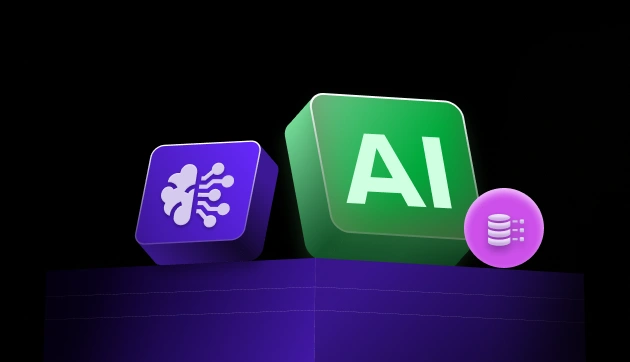
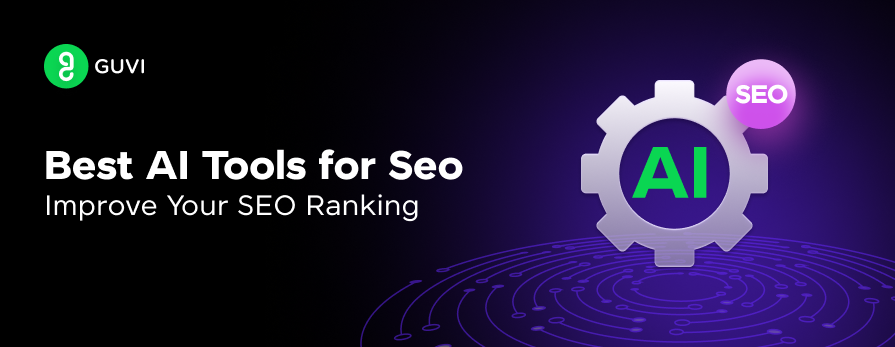
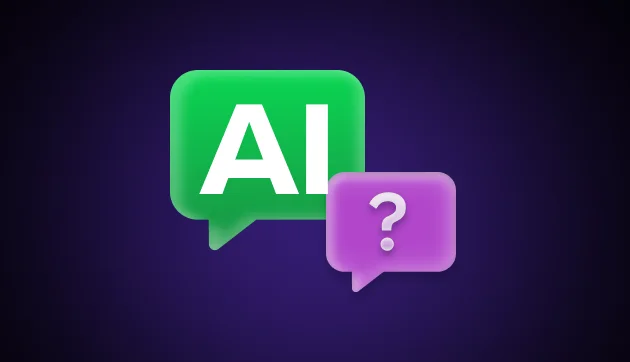
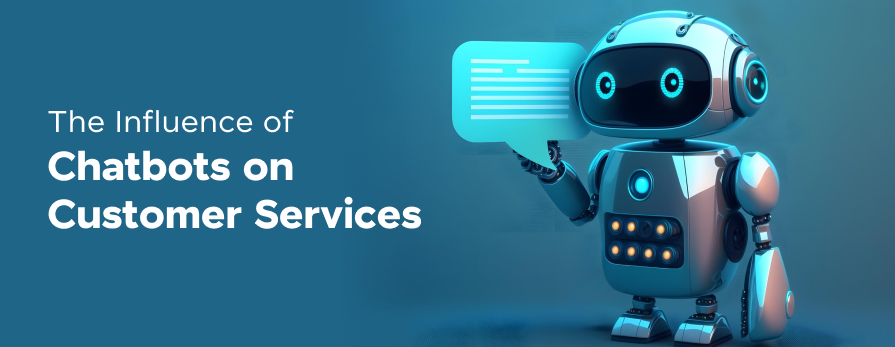

Did you enjoy this article?